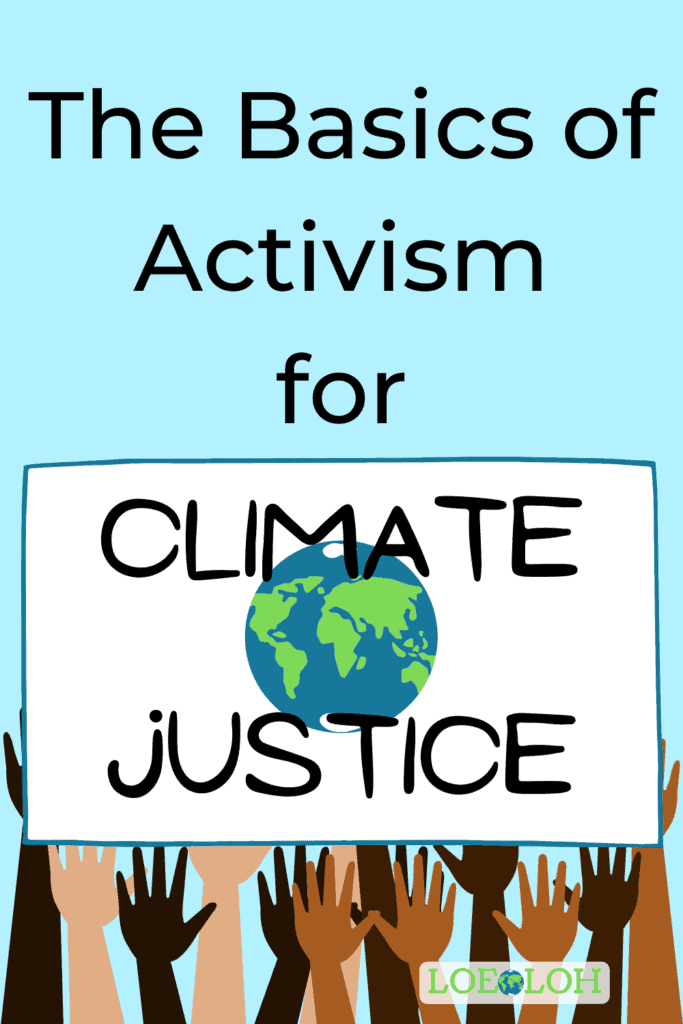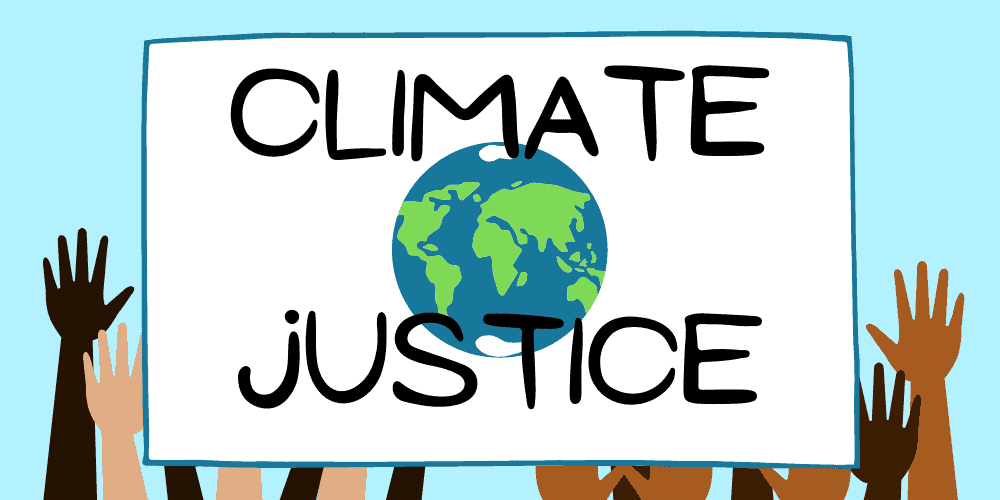Before I started Loeloh I didn’t fully appreciate the importance of activism for climate justice. However, as I’ve learned more about effective climate change solutions, climate justice and the activists involved, I recognize the need for continued activism and the enormous power of we the people.
And we the people have no time to waste! So let’s get to it.
The Basics of Activism for Climate Justice
Defining Activism
Activism has a variety of definitions, here are two different ones to start us off.
Merriam Webster defines activism as “a doctrine or practice that emphasizes direct vigorous action especially in support of or opposition to one side of a controversial issue”
While Cambridge Dictionary defines activism as “the use of direct and noticeable action to achieve a result, usually a political or social one.”
Based on these definitions, there are a wide variety of actions under the umbrella of activism. Being a newbie myself to activism I looked to experienced activists for guidance of how to begin. Below are various actions from these activists to get you started.
Activism Actions to Get You Started
“Find your ‘Why’”
Climate justice activist, Jamie Margolin, recommends to, “find your ‘why’”. At age 15, Jamie Margolin, along with Nadia Nazar, Madelaine Tew, and Zanagee Artis founded Zero Hour. Zero Hour is a youth led climate justice organization. She advises to take sometime to reflect on what is your reason to get out there. What gets you fired up? Is there a cause that you already volunteer for or donate to? What have you found yourself wanting to learn more about? What is something you want to see change or speak up about? Activism work is tough so having a powerful why will help you keep motivated to working towards change. In this interview with Mashable SE Asia Jamie Margolin said, “Your why is something that will likely never change; it is what you are fighting for that you cannot live without. ”
Dive IN
Once you have figured out your why, search for a local organization that fits your why and dive right in. If the first organization you choose isn’t the perfect fit for you keep looking. There are plenty of organizations working to address climate change through different viewpoints, many with local chapters. There are groups working for climate justice, gender inequality, racial injustice (here are some more), Indigenous Peoples’ rights, and the list goes on.
You do NOT have to be an Expert
If you feel apprehensive to join a group and are not sure if you can be of any help don’t worry. You have skills and strengths that are valuable. Also you will learn as you continue to take part in activism for climate justice, this leads us to the next part.
Educate Yourself
Yes, there is great deal to learn about climate change. I still find myself at times taken a back at the magnitude, breadth, and history of it all. When this happens I remind myself I do not have to know everything, and this is ok! Remember, you and I do NOT have to be an experts.
Fortunately for us non-experts there are a plethora of resources out there from experts and activists ready to teach you and me. Intersectional Environmentalist is a group that “advocates for both the protection of people and the planet.” Heated is a newsletter from Emily Atkin covering the latest climate news. Project Drawdown is a group of experts from a wide variety of fields that have researched and determined the most effective climate solutions available today.
Plus, here are some posts here at Loeloh to start off with too. There are Solutions for Climate Change! How does Carbon Dioxide relate to Climate Change! Fighting against Racism IS fighting against Climate Change! Divesting from Fossil Fuels and more.
Listen!!!
Listen to your neighbor, your friends, your kids, your family, and your community about their thoughts on climate change. Actively listen to people who do not look like you and to those who are not in your community. Also listen to those who may not agree with you. When we actively listen to others we often will gain a better insight into their perspective. And likely find a shared value or maybe even learn something about ourselves. Climate change solutions are not effective without also meeting the needs of those who are the most greatly affected and this requires listening to them.
Advocate
Although climate change effects all of us, it disproportionately impacts Black, Indigenous, Latinx, Asian, women, and poor communities the most. If you are like me and are privileged enough to choose to be a part of activism then we must advocate for those most affected by climate change. The following are how we advocate from three activists.
Eva Maria Lewis is a youth activist founder of Youth for Black Lives, The I Project, and Free Root Operation. In her article for Adobe she explained that activism cannot happen without both activists and advocates. Advocates share information about injustices with others which allows activists to continue their role in fighting injustices. She continues stating, “it is important to recognize that our voices might not always be the one that needs to be elevated. A dialogue cannot occur when everyone in the room is speaking.”
Which leads to another activist Blair Imani who says “Pass that mic.” We know that climate change affects various communities unequally and we need to ensure their point of view is heard. Advocate for diverse perspectives from these communities making sure to avoid tokenism.
To avoid tokenism Jamie Margolin advises to not include people in a performative way or to check off a box. Rather encourage participation from people you have relationships with because you genuinely value their experience and want to collaborate with them. Also we must be attentive to the needs of the people we are advocating for. This requires us to check in, listen, and together with them implementing their proposals. Margolin states, “No one knows what’s better for their community than the actual community affected.”
Do What You Can, the Best You Can
We are all uniquely capable and positioned in our lives and communities to play our part in activism for climate justice. Some of us might be able to jump cannonball style into the deep end of activism while others will get into it one foot at a time. Every step and action counts towards the larger climate justice movement. So advocate on social media as both Eva Maria Lewis and Jamie Margolin have done and continue to do. Raise your hand to take on a role in a local organization. Support the businesses who are in-line with your why. See if your employer would support volunteer hours or match your donation to an organization. Start conversations with your friends, coworkers, and family about your why and encourage them to join you in the movement. Vote in every single election! Write letters, call or tweet your elected officials on both sides of the aisle. Bring a friend and march for our future. Reach out to the leaders in your chosen organization and ask how you can best serve their needs. Whatever you do, do it the best you can.
These are just a handful of examples of what you can do to join in on the activism for climate justice. Like Dr. Ayana Elizabeth Johnson, a marine biologist and a climate policy expert says, “There’s an infinite amount of work to be done, so just pick something and do it.”


